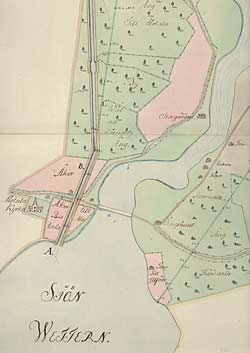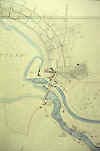|
Motala Lock and Bridges < Westwards | Vadstena | Motala Lock and Bridges Borenshult Lock and Bridge | Eastwards > |
As far as the amount of water was concerned, there was never the need to worry about a lack of water since Lake Vättern is the "storehouse" for the eastern section of the Göta Canal. All of the project leaders seem to have been in agreement on this.
The year 1810 marked the official beginning of the building of the canal. Commencement activities were held in Motala. According to Baltzar von Platen, Motala was to be the location of the head office of the canal company AB Göta kanalbolag. Plans also included the building of the Motala Verkstad, a workshop that functioned as the maintenance workshop for the building of the canal. The workshop is considered the cradle of the Swedish workshop industry. Von Platon's plans also included the establishing of a chain of developing towns along the canal - Motala, Sjötorp, Lyrestad and Töreboda. Motala quickly expanded and in 1881 officially became a town.
Baltzar von Platen died on 6 December 1829 and is buried "on the bank he himself has built," close to the Motala Harbour. The nearest lock stairway, located in Borenshult, was given the name the "Remembrance" Locks. Up to this day, eastbound vessels still honour the creator of the Göta Canal with a signal. On the above canal proposal from 1774, the canal is joined to Lake Vättern on the northern bank of the river Motala Ström. This is the same as the present-day construction.
A good reference point on the map is Motala Church. The bridge on the Motala Ström and connecting roads are also clearly marked on the map. Click on the maps to enlargen!
Use the "Back" button to return. |








